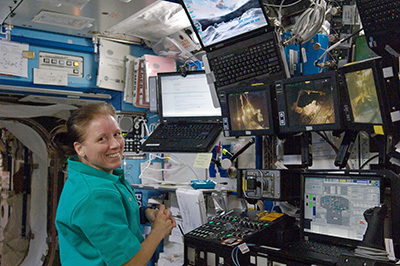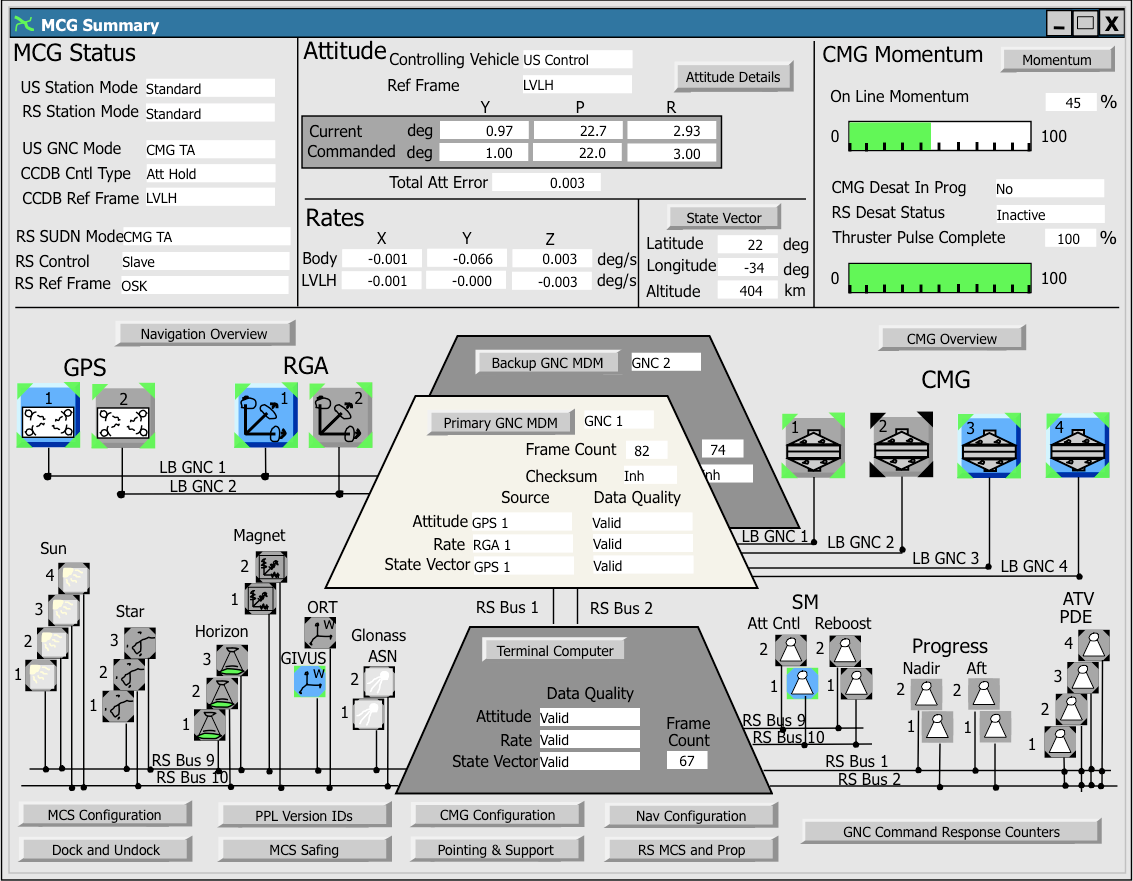Laptops on ISS
 When viewing photos and videos taken at the International Space Station, you can often notice that the interior of the station is teeming with laptops in special stands. How are they used in space?
When viewing photos and videos taken at the International Space Station, you can often notice that the interior of the station is teeming with laptops in special stands. How are they used in space?NASA engineer Robert Frost shared his answer to this question. When the station was still being designed, it was a wise decision not to use physical interfaces - they are too difficult to upgrade and repair. It’s much easier to put laptops, and if something happens to them, it’s easy to fix the situation by reinstalling programs, rewriting files or replacing a laptop. Laptops are much more accessible specialized systems, so there will be no need to specifically retrain the basic interaction.
With the exception of critical systems, for example, ventilation valves, communication panels and some other devices, the entire station is controlled using laptops. There are about 80 of them on the ISS, most of them are Lenovo Thinkpad T61P. Computers are not the most powerful: they have Intel Core Duo processors, you can put up to 4 gigabytes of RAM in this model. But there are some very old Lenovo A31p. To understand the age of these machines: their heart is the Pentium 4-M processor 2002.
The following is easy to count for advertising, but these are just facts. ThinkPad is the only certified laptop for use on the ISS, Lenovo just adores . The company also takes pride in the fact that their laptops are central to all world space agencies. ThinkPad laptops on the ISS have been used since the very beginning of the station’s life, since 1998. Since 1995, ThinkPad flew into space on the shuttles more than 50 times.
')
Lenovo is a Chinese company. With all the sinophobia of the American authorities, there is nothing strange about this: the ThinkPad brand was owned by IBM (a corporation from the USA) at the time of signing the contract, but was sold in 2005. It is likely that in the future there will be more problems with regulatory authorities because of the country of origin of laptops.
Computers to be sent into space undergo a variety of tests: for radiation, temperature, atmosphere, flammability. The flypaper for fastening is applied on them. In addition, a number of changes have been made to their cooling systems: hot air does not rise up under microgravity conditions, and air density is different. Attached to the laptop adapter for power from the on-board network of 28 volts DC.
The installed software depends on the problem to be solved. In the American segment, management takes place with machines called PCS (Portable Computer System, portable computer system). Usually there are 7 of them. Linux is running on laptops, the work goes through a 1553 standard bus as a remote terminal.
There are about the same number of laptops in the Russian segment, which NASA calls simply “Russian laptops”. They also spin the operating system based on the Linux kernel. These laptops control the Russian elements of the station.
PCS and Russian analogues have their own graphical interfaces, which depict the ISS. To control, simply click on the station module, and then select the desired item. Interfaces are different, but they are not so difficult to learn, and rarely do anything in a foreign system.
There is no single user interface: 8 laptops from the Japan Aerospace Exploration Agency, which are in Japanese modules, and two European laptops have their own system. There are still about a dozen different laptops for various operations.
The remaining laptops are integrated into the computer network. These machines are called Station Support Computers (SSC, computers to support the station), and they work under Microsoft Windows. According to Frost , more than half of the laptops on the board work under Windows, but they are not allowed to access the 1553 system. The purpose of these computers is to keep notes, send e-mails, conduct video conferencing, write blogs and microblogs, view data, take inventory.
If you look at the picture before the kata (it is clickable and has a size of ≈3.5 MiB), then you can see three laptops at once. Shannon, who is closest to her head, is used to monitor the procedure she performs.
The one above and to the right is one of the SSC computers (computers for personal use), she probably reads the work schedule from him. Judging by the desktop screensaver, it has Windows XP SP2 installed. It was the expedition ISS-24, 2010, and Service Pack 3 was released back in May 2008. Speaking of security: in 2008, the W32.Gammima.AG worm hit the station’s computers because of the flash drive. In 2013, migration from Windows XP to Debian 6 was carried out .
In the lower right corner of the photo is one of the PCS computers for controlling the station. It seems that the astronaut has switched to the gateway page. There are no emergency warnings, there is only a message about small communication problems of the power management system.
The photo is also interesting for several interfaces of the ISS itself: above the hatch is the warning system panel, to the right of the Shannon face is a radio and intercom system. Several monitors in front of her face with the help of cameras behind the station show the process of working with the manipulator.

The status screen with an overview of the main indicators of the united system of the American MCS and the Russian SUDN (motion control and navigation systems). From here, the crew can control any device of navigation systems and station position and set the operating modes of the software and hardware of the engines. Of course, the command of the Russian segment is carried out with Russian laptops.
Some documents about the organization of the work of laptops are available on SpaceRef .
Source: https://habr.com/ru/post/363353/
All Articles